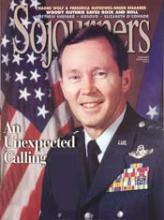The political environment of the post-Cold War has set a paradoxical challenge before those who oppose nuclear weapons. On the one hand, never before in the nuclear age has the opportunity been greater than it is today to remove nuclear danger—not just reduce the arsenals, "stabilize" them, or otherwise "control" them, but actually to banish them from the face of the Earth. On the other hand, never before has general public awareness of the nuclear question been lower than it is today. Closing this gulf between opportunity and action is the first task that faces the new abolitionists.
But before we can close the gap we must understand it. Three aspects of the nuclear question have appeared both in the Cold War and the post-Cold War periods. The first is the shape of nuclear danger itself—its magnitude, its level of urgency, and its points of origin. The second is the moral riddle posed by nuclear arms. The third is the degree to which opportunities for action to solve the dilemma are present or lacking.
In the Cold War, nuclear danger became total and immediate. The arsenals of the two blocs of nations that faced one another across the Iron Curtain jointly placed hundreds of millions of people, most of them entirely uninvolved in any military activity, in jeopardy of prompt annihilation. Before long, these arsenals grew to a point at which the survival of the human species itself was placed in jeopardy. The political point of origin of the danger was simple and obvious. It was the worldwide struggle waged between the Soviet Union and the West.
Read the Full Article

